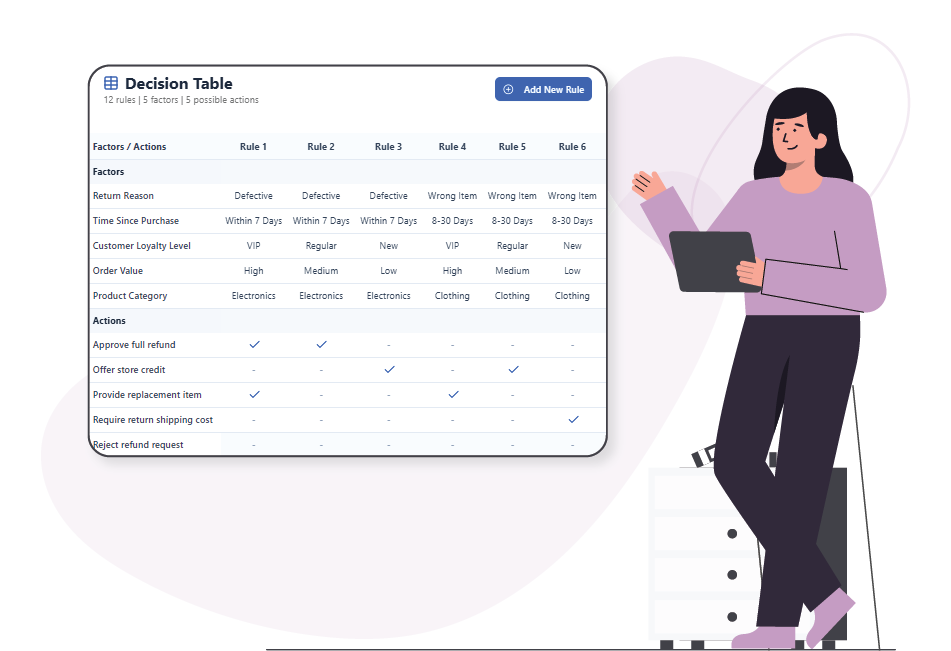Now Reading: Beyond the Basics: Best Practices for High-Quality Decision Tables
-
01
Beyond the Basics: Best Practices for High-Quality Decision Tables
Beyond the Basics: Best Practices for High-Quality Decision Tables
While decision tables are an excellent tool for simplifying complex logic, their true power is unlocked when you follow a few key best practices. A poorly designed table can be just as confusing as a complex piece of code. By focusing on clarity, completeness, and consistency, you can create a rule set that is not only functional but also easy for everyone to understand and maintain.

Tip 1: Be Precise with Your Conditions and Actions
The foundation of any good decision table is its conditions and actions. Be as specific as possible. Avoid vague terms and use precise language that leaves no room for interpretation.
For example, instead of a condition like “Customer Status,” use more descriptive values like “New Customer,” “Returning Customer (Less than 1 year),” and “Returning Customer (More than 1 year).” Similarly, for actions, instead of “Apply Discount,” specify “Apply 10% Discount,” “Apply Free Shipping,” or “Do Not Apply Discount.” The more granular you are, the easier it is for both people and machines to understand the rules.
Tip 2: Use the “Otherwise” Clause to Handle Exceptions
A common mistake is trying to define every single possible combination of conditions, which can lead to tables that are unwieldy and difficult to read. The “Otherwise” clause is a simple yet powerful tool for handling all the remaining, undefined cases.
For instance, in a shipping rule table, you might define specific rules for “Standard Shipping” and “Express Shipping.” However, instead of trying to account for every other type of shipping, you can use an “Otherwise” clause to apply a default rule like “Reject Shipment” for all other scenarios. This keeps your table concise and easy to manage while ensuring that no scenario is left unhandled.
Tip 3: Break Down Large Tables into Smaller Ones
If a decision table is too large to fit on a single screen, it’s a sign that it needs to be broken down. Trying to manage dozens of conditions and hundreds of rules in one table can quickly become overwhelming.
A better approach is to create a series of smaller, more focused tables that can be chained together. For example, the output of an “eligibility” table could be used as the input for a “discount” table. This modular approach makes the logic far more manageable and transparent.
Tip 4: Involve Stakeholders from the Start
Decision tables are powerful communication tools. Their tabular format makes them accessible to both technical and non-technical stakeholders. Involve your business analysts, product managers, and even legal teams in the creation and review process from the very beginning. This collaborative approach ensures that the rules you are implementing are not only technically sound, but also aligned with business goals and policies. It also significantly reduces the need for back-and-forth communication and costly rework down the line.
I hope this helps you build decision tables that are clear, efficient, and easy to maintain. Let me know if you would like me to draft another article on a different topic.

